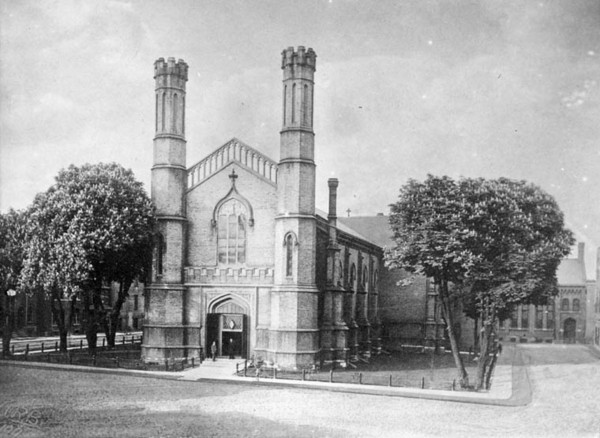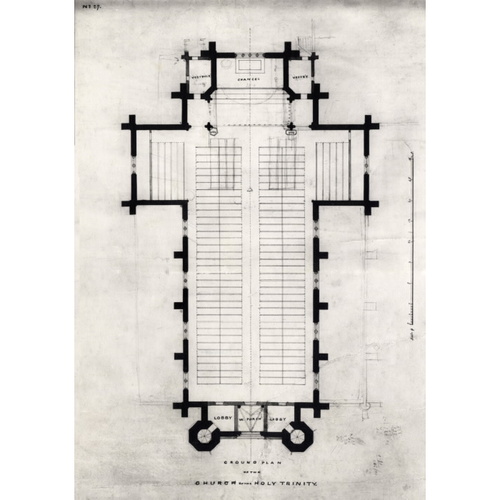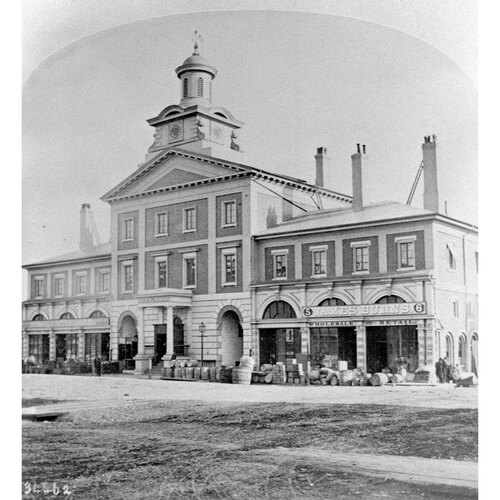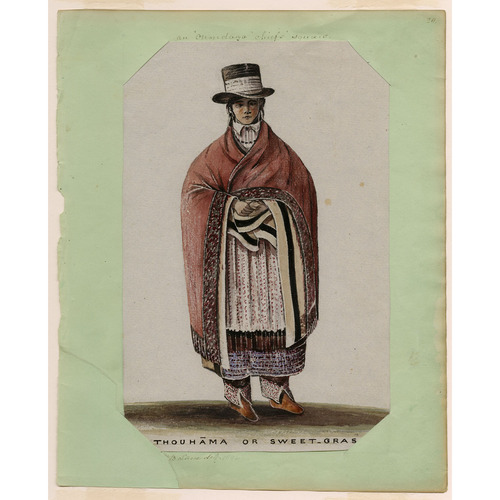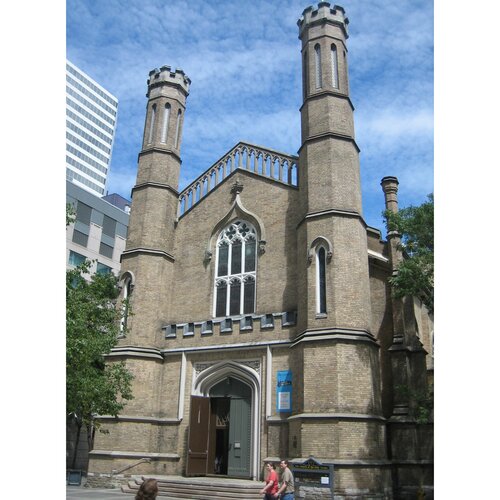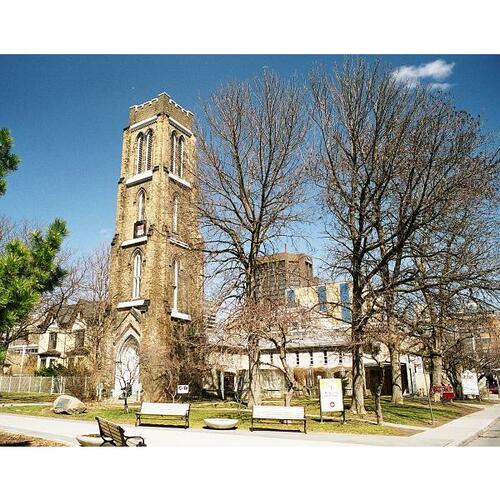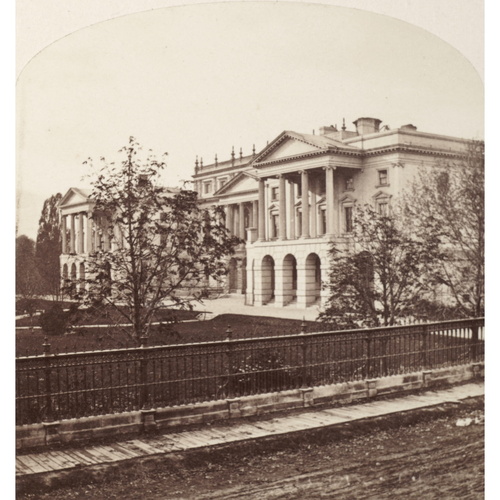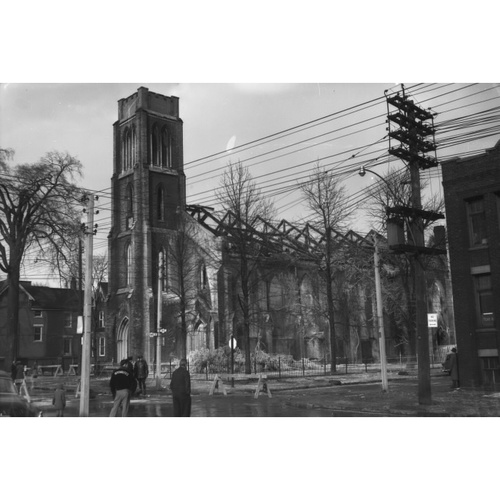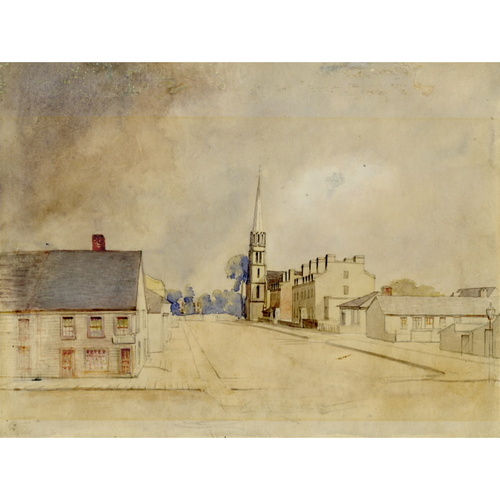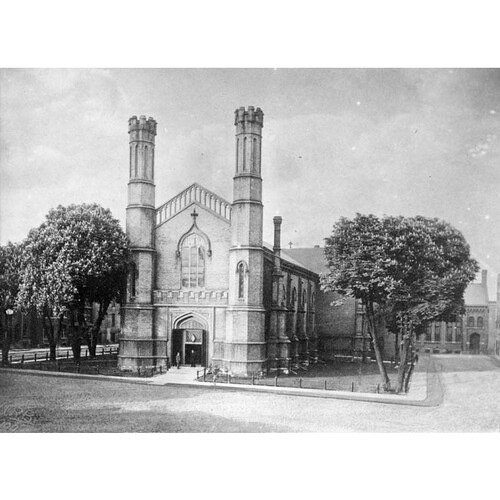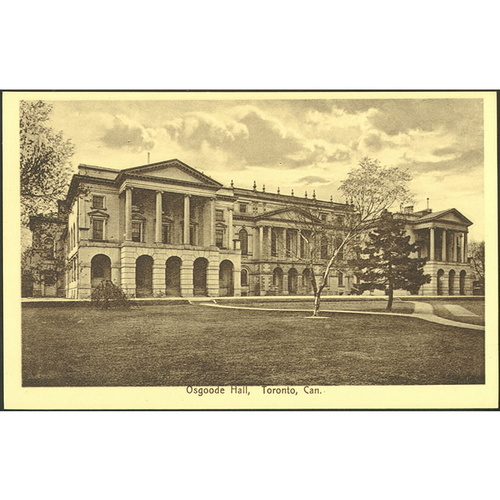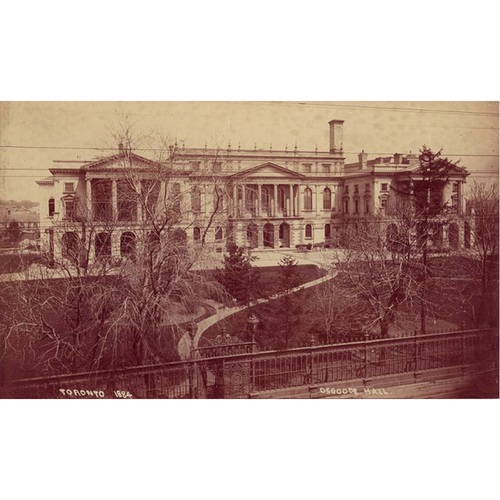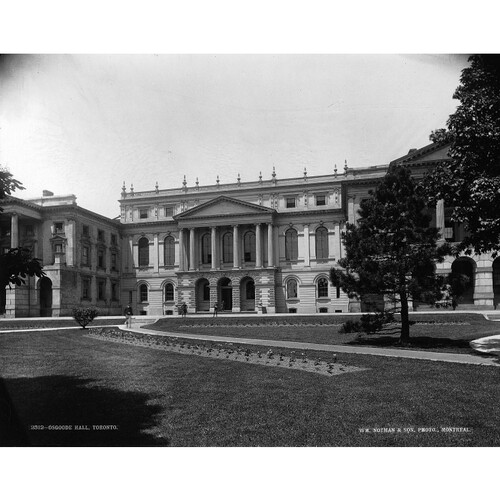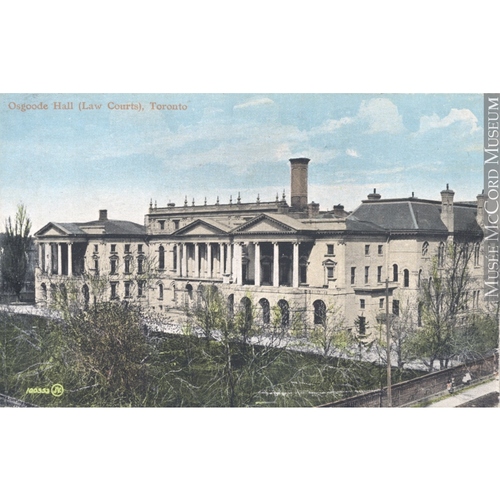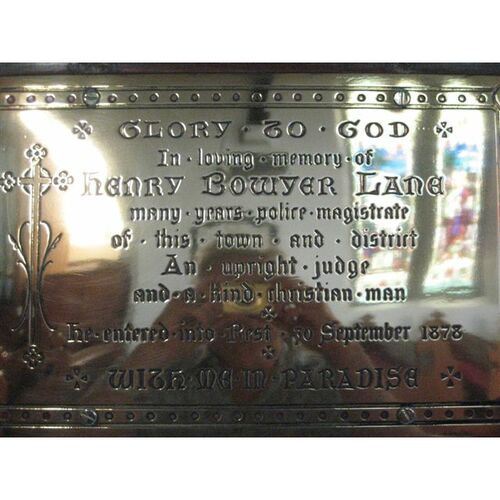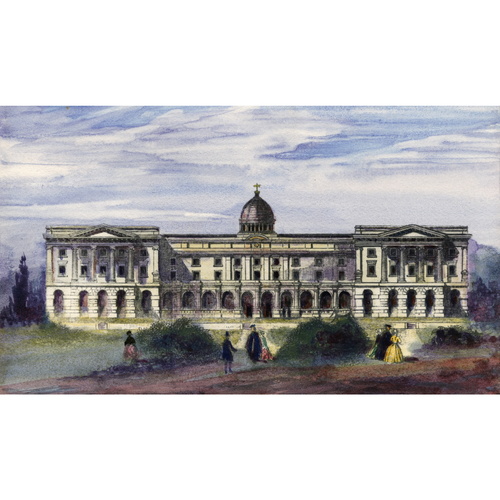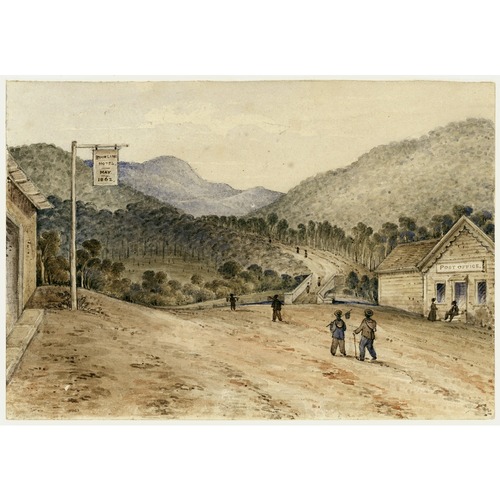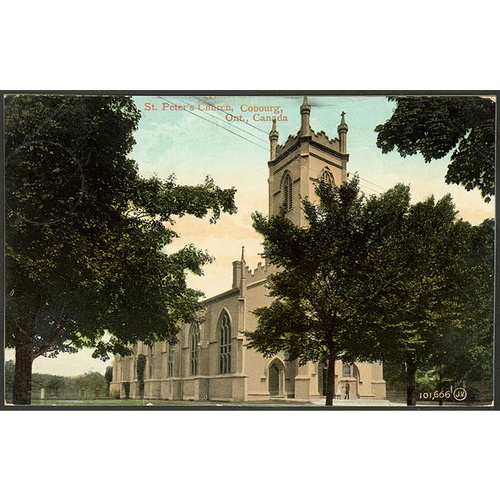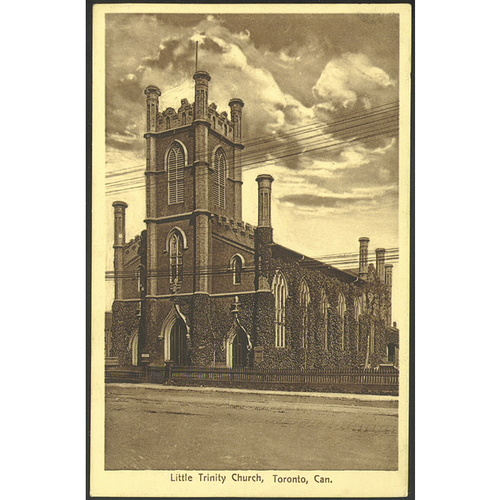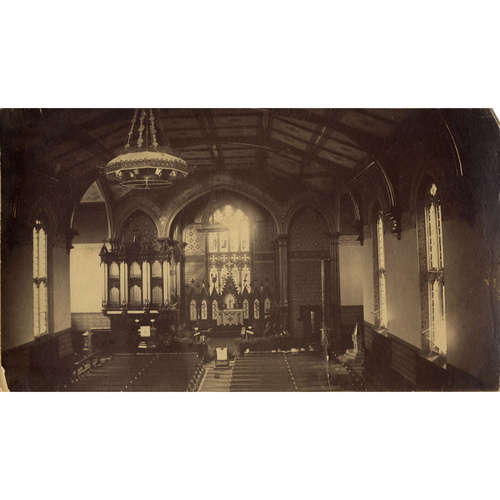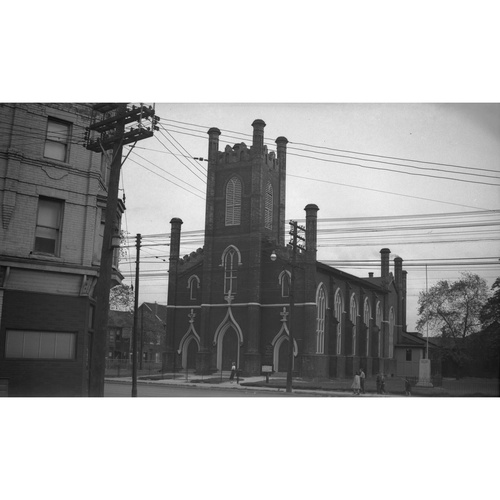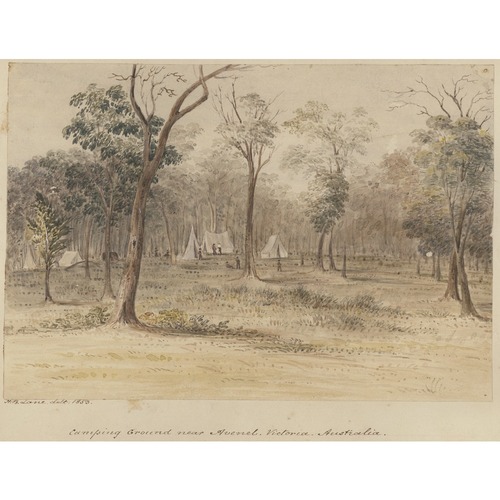LANE, HENRY BOWYER JOSEPH, architect, water-colourist, office holder, businessman, and magistrate; b. 9 May 1817 on Corfu (Kérkira, Greece), son of Captain Henry Bowyer Lane and Elizabeth Lacey; m. 9 May 1844 Lucy Anne Sharpe in Thornhill, Upper Canada; they had no known children; d. 30 Sept. 1878 near Warrnambool, Victoria, Australia.
Henry Bowyer Joseph Lane’s father, a Royal Artillery officer and veteran of the Peninsular War, was posted on Corfu between 1815 and 1819. The Lane family was prominent in Staffordshire and in Surrey although Henry spent much of his youth in Devon, where for a brief period in 1830–31 he attended Blundell’s School at Tiverton. The balance of his schooling and his professional training in architecture are presumed to have taken place in England before he emigrated to Canada. He was in this country by 1841, living first in Cobourg, Upper Canada, and then in Toronto.
Although the boom years of the early 1840s saw many new buildings constructed in Cobourg, only two of Lane’s commissions there are known: St Peter’s (Anglican) parochial school (1841), which was also to house the Diocesan Theological Institution [see John Strachan*], and St Peter’s Church (1843). This latter building was completed over a period of several years, all during the rectorship of the Reverend Alexander Neil Bethune, and in the final phases of the work Lane’s plans were modified by Kivas Tully*, the architect-in-charge.
Lane moved to Toronto in April 1842. There, during the 1840s, a spate of building activity resulted from a general sense that the city’s architecture was no match for its emerging importance. This feeling of architectural poverty was summed up best by the Toronto Star: “We see the stiff, stale appearance of bygone days, vanishing like ugly phantoms and architecture in all its fair proportions, stealing coyly from the dark corner in which it has been confined, either by the niggardliness of propriety or stupidity of the building faculty.” Shortly after Lane’s arrival he prepared plans for Little Trinity Church (Anglican) in the eastern part of the city. He also submitted an entry in the 1843 competition, won by Thomas Young*, to design a replacement for the damaged monument to General Sir Isaac Brock* on Queenston Heights. In the following year, however, Lane emerged, at age 26 or 27, as a major figure when his plans were chosen for three significant buildings in Toronto: the market-house and city hall; the Anglican Church of St George the Martyr; and major additions to Osgoode Hall, the home of the Law Society of Upper Canada.
A classical building expressing the importance of common law, Osgoode Hall was clearly Lane’s Canadian masterpiece. He was responsible for the entire west wing, for the impressive stone portico applied to John Ewart*’s earlier east wing to create a balanced composition, and for a Palladian loggia and dignifying dome that dressed up an existing range of chambers between the wings. This central section was demolished in 1856, but the new lawcourts and Great Library built in its place to designs by Frederic William Cumberland* and William George Storm* acknowledged Lane’s choice of materials, massing, and style.
The balance of his short career in Canada produced only a few more known commissions of note: ecclesiastical furnishings for St Mark’s Church (Anglican), Niagara (Niagara-on-the-Lake) (1845); plans for St Paul’s Church (Anglican), Kingston (1846), which after a major fire in 1854 was rebuilt under the supervision of William Hay*; the Church of the Holy Trinity (Anglican), Toronto (1846); and houses in that city for Colonel Arthur Carthew and George William Allan, both begun in 1847. The competition to design Holy Trinity had resulted in the awarding of the premium to William Thomas*, a talented designer who had considerably more experience than Lane. Thomas’s plans were set aside, however, and Lane was asked to prepare drawings with advice from a number of architects and others. It is likely that he had a hand in alterations made about that time to Dundurn, the Hamilton mansion of Sir Allan Napier MacNab*. While in Canada, Lane, who as an architect was also a competent artist, made a number of water-colour sketches, chiefly of places he visited. One of these sketches, of the Boulton family’s Toronto home, the Grange, was shown in the 1847 exhibition of the Toronto Society of Arts. In 1845–46 Lane had entered, but did not win, competitions to design several Toronto structures – a new front for the old market buildings, the Commercial Bank of the Midland District, and St Michael’s Cathedral (Roman Catholic) – as well as the combined district court-house, town hall, and market building in Niagara. In each case the first premium went to William Thomas. Lane’s achievements were significant, none the less, and a remarkably large number of his buildings survive as evidence of his skill and his good fortune to arrive in Toronto at an appropriate time.
Lane came to Canada freshly trained in a wide variety of the Gothic Revival and classical styles which were current in England in the late 1830s. He was able, therefore, to inspire confidence that his designs were in fashion, while adapting his choice of architectural style to suit each situation. Little Trinity and Holy Trinity churches were “Domestic-Gothic,” recalling the English parish churches of the Tudor period. On the other hand, the Perpendicular Gothic manner of St George the Martyr, considered the correct style by the emerging ecclesiological societies in England, pleased its well-informed and well-to-do congregation.
Some portion of Lane’s success can be traced to the interest taken in his work by the influential Boulton family, to whom he was related through the marriage alliances of two of his aunts in England. In Cobourg, George Strange Boulton* and his nephew D’Arcy Edward Boulton (who had attended Blundell’s School at the same time as Lane) clearly carried weight, although Lane, who was almost certainly the only professionally trained architect there at the time, would probably have secured some commissions in any event. At Niagara, James Boulton was in a position to be helpful. The Toronto field was more competitive, however, and Lane likely benefited from William Henry Boulton’s membership on city council and on the building committees of St George the Martyr and Osgoode Hall. After enjoying this powerful patronage for more than six years, Lane left Canada in November 1847 for England. There his career took a new direction when, a year later, he became a secretary to the Archaeological Institute of Great Britain and Ireland. His duties included reporting on the excavation of barrows and supervising the recovery of Roman and early British remains. In this capacity he sat in 1850 on a blue-ribbon committee chaired by Prince Albert to organize a display of ancient and medieval art for the Royal Society of Arts in anticipation of the Great Exhibition the following year.
After retiring from the institute’s staff in October 1850, he lived for a time in Birchfields, near Birmingham. Feeling wanderlust again in 1852, he embarked on the Mermaid from London for Australia. A fellow saloon-class passenger described him as “a general favourite.” On arriving in Melbourne at the end of July he applied immediately for employment in the office of Henry Ginn, colonial architect for Victoria, providing references from several eminent British architects, including Sir Charles Barry. Within ten days he had been hired as a draftsman; he stayed with Ginn only until October, when he resigned to find more remunerative work. Six months later, however, he was back on Ginn’s staff at a better salary as clerk of the works at Ballarat, in the goldfields about 60 miles north of Melbourne. He was instructed to proceed there “with as little delay as possible” to design and supervise construction of buildings in the government camp. These included military barracks, officers’ quarters, a cookhouse, commissariat stores, gold-licensing offices, a police court, a post office, a hospital, and the resident commissioner’s quarters. As well, he provided plans for public buildings nearby, including a county court and jail in Buninyong, police quarters and stables in Creswick’s Creek (Creswick), and a police station in Meredith, though some were not erected. From April 1854 Lane was an assistant colonial engineer, in which position he received a higher salary. In his successive posts he was allowed to accept private commissions. Hence, he may have drawn up plans for Ballarat’s Christ Church (Anglican) and the Wesleyan School for Girls. In 1853 he took part in a design competition for the University of Melbourne’s first buildings and won the second prize of £200.
To the Victoria government, the gold strikes presented challenges in maintaining order as tens of thousands of miners flooded into the area. By 1854 their frustration with the lack of civil rights and the high costs of mining licences resulted in several Chartist-inspired “monster meetings” in Ballarat. Lane reported to a local justice of the peace on one such gathering, which he had attended on 11 November. When armed rebellion broke out three weeks later, he prudently had the camp buildings reinforced with bags of oats and bales of hay.
His work at Ballarat ended in 1855. For a brief time he was a partner in a quartz-crushing operation in Mount Egerton. Soon, however, a series of patronage appointments in the goldfields as a magistrate, warden, Chinese protector, coroner, deputy sheriff, and commissioner of crown lands occupied him entirely. Four water-colours he painted of scattered scenes survive from this time. In 1864 his duties took him to Sale and Bairnsdale in eastern Victoria, and in 1866 to Belfast (Port Fairy), Warrnambool, and Portland, about 225 miles west of Melbourne.
Lane served in western Victoria for a dozen years as police magistrate and deputy sheriff. To these posts were added those of guardian of minors, coroner, returning officer, and officer in charge of the local detachment of the artillery corps. In his spare time he made written observations on aborigines that came to the attention of Charles Darwin. His good fortune ran out in January 1878, however, when he was retrenched in the “Berry Blight” of civil-service cuts forced on Premier Graham Berry of Victoria after the Legislative Council refused to pass a supply bill. Tributes to Lane’s integrity, ability, and impartiality flowed from fellow magistrates who asked for his reinstatement, but it was not to be. The soldiers under his command presented him with a “splendidly finished double-barrelled breech-loader with stop action and recoil safety action.” But the dismissal preyed on his mind and undermined his health to such an extent that he lived only a short while longer. He died from what the newspapers described as “bilious fever, which assumed a typhoid form,” and was buried in Tower Hill Cemetery, near Warrnambool. The Belfast detachment of volunteer artillery fired three volleys over his grave as a mark of respect. In his will he left everything to his wife. A plaque in St John’s Anglican Church, Port Fairy, memorializes Lane as an “upright judge and a kind Christian man.”
Surviving plans signed by Henry Bowyer Joseph Lane include drawings for the George William Allan house, 1847 (in the J. C. B. and E. C. Horwood coll. (uncatalogued), AO), and the Toronto City Hall (in the Henry Langley papers, nos.172–75, and the J. G. Howard papers, sect.iii, architectural plans, no.415, MTL). Unsigned plans which can be attributed to him include one for Osgoode Hall (in the Horwood coll.), additional studies for City Hall (Howard papers, no.411; Langley papers, nos.170–71) and the Allan house (Howard papers, nos.90–91), and a damaged drawing for the Arthur Carthew house (in the John Fisken papers (uncatalogued), MTL), which is missing that part where a signature might originally have been. There are also three studies for City Hall in John George Howard*’s hand which were probably copied from drawings by Lane (Howard papers, nos.412–14).
Lane’s written specifications for the Allan house, signed and dated 18 Aug. 1847, are also in section iii of the Howard papers (box 2, misc. buildings, 1847–55). He is also the author of an architectural description of the newly completed “Church of the Holy Trinity,” published anonymously in the Church (Toronto) on 15 Oct. 1847 and reprinted on the 19th in the British Colonist (Toronto).
Lane’s sketch The Grange is listed in the Toronto Soc. of Arts catalogue, Toronto Society of Arts: first exhibition, 1847 … ([Toronto?, 1847?]), no.155; the water-colour itself is now in the collection of the Art Gallery of Ont. (Toronto). The London Regional Art Gallery (London, Ont.) holds another of his sketches, Quebec, Lower Canada, painted around 1840, this being one of eight Lane water-colours of Canadian subjects and seventeen topographical and architectural sketches of English interest offered at two 1977 auctions in England. The illustration of Osgoode Hall facing page 195 of W. H. Smith, Smith’s Canadian gazetteer; comprising statistical and general information respecting all parts of the upper province, or Canada West … (Toronto, 1846), is based on Lane’s sketch; two other contemporary plates depicting his commissions may be seen in C. P. De Volpi, Toronto, a pictorial record: historical prints and illustrations of the city of Toronto, province of Ontario, Canada (Montreal, 1965), plates 13 and 22. s.a.o. and m.b.macr.
ACC-T, Church of St Peter (Cobourg, Ont.), vestry minute-books, 23 June 1851; Church of the Holy Trinity (Toronto) papers, T. A. Reed, “The Church of the Holy Trinity” (typescript, n.d.), 11, 22; St George the Martyr (Toronto), papers, tenders for construction of church, 1844–45; finances for construction of church, 1842–51, especially W. H. Boulton to H. B. [J.] Lane, 1851, receipted by Lane, 8 May 1851. AO, Map coll., S. A. Fleming, “Plan of the town of Cobourg …,” 1848; MS 35, letter-books, 1844–49: 310; MU 296. Blundell’s School (Tiverton, Eng.), Reg., 1830–31. CTA, RG 1, A, 10 Jan. 1843, 4 March 1844, 30 Jan. 1846; RG 5, F, 1842–47. Law Soc. of U.C. (Toronto), “Journal of proceedings of the Convocation of Benchers of the Law Society of Upper Canada” (8v.), 6, 10 Aug. 1844. MTL, John Fisken papers, papers concerning Arthur Carthew house, 1847–48, especially report, May 1848 [probably by William Robinson] (uncatalogued); J. G. Howard papers, sect.ii, diaries, 15 April, 27 Aug. 1842; 31 July 1844; 29 Jan., 30 Oct. 1847. Univ. of Toronto, Thomas Fisher Rare Books Library, ms coll. 56 (A. N. MacNab papers), L. A. Sharpe to MacNab, 19 Sept. 1849. Sophia MacNab, The diary of Sophia MacNab, ed. C. A. Carter and T. M. Bailey (Hamilton, Ont., 1968), 65–66. “Town Hall and Market House in Niagara,” British Colonist (Toronto), 21 July 1846, reprinted from Niagara Chronicle (Niagara [Niagara-on-the-Lake, Ont.]), 10 July 1846. British Colonist, 20, 27 Aug. 1844; 11 Feb., 27 June 1845; 27, 31 March 1846; 8 June 1847. Church, 21 April, 30 June 1843; 17 May 1844; 21 Nov. 1845; 17 April 1846; 27 Oct. 1847; 22 Feb. 1855. Cobourg Star, 30 June, 7 July 1841; 19 Jan. 1842; 7 June 1843; 24 April, 1 May 1844. Examiner (Toronto), 10 Jan. 1844. Globe, 2 Dec. 1845. Herald (Toronto), 27 July 1843, 11 April 1844, 18 May 1845, 2 July 1846. Toronto Patriot, 2 Feb. 1843, 7 May 1844. Toronto Star, 20 May 1841; 12 April 1842; 13 April, 20 Nov. 1844. John and J. B. Burke, A genealogical and heraldic dictionary of the landed gentry of Great Britain and Ireland (3v., London, 1849), 3: 123. MacRae and Adamson, Cornerstones of order. MacRae et al., Hallowed walls.
About the 2015 revision:
After carrying out extensive research, author Stephen A. Otto was able to complete Henry Bowyer Joseph Lane’s story, following him from his residence at Birchfields, Eng., which is where the original biography ended. The revised version of the biography, now part of vol.X rather than vol.VIII, includes information on Lane’s activities between November 1847, when he left Canada for England, and his death in 1878. Between 1853, the year after he arrived in Australia, and 1863 he painted four known water-colours, which were auctioned by Christie’s, Melbourne, in 1977. Two were sold to private bidders: View from Lockharts Station on the Mitta Mitta, Victoria (1859), and Morses Creek, Victoria, Bogong Mountains in distance (1863). The other two (Acc. nos.H38466 and H38465) are in the La Trobe Coll. in the State Library of Victoria (Melbourne): Camping ground near Avenel, Victoria, Australia (1853) and The Buckland near the camp (1862).
The DCB/DBC thanks the Port Fairy Hist. Soc. for providing a photograph of Lane’s memorial plaque at St John’s Anglican Church, Port Fairy, Victoria, Australia (see image gallery below).
The revisions are based on the following: General Records Office (Southport, Eng.), Army reg. of births, Corfu (Greece), 9 May 1817. HM Courts & Tribunals Service, Principal Registry of the Family Div., Probate Dept. (London), Estate files, 22 March 1887. Public Record Office Victoria (North Melbourne, Australia), Chief Secretary’s papers, A 53/3673 (Lane to Henry Ginn, 31 March 1853); VPRS 40/P1, Letter book, unit 1, 168/53 (Henry Ginn, Colonial Architect and Engineer, to Clerk of Works, Ballarat, 1 April 1853); VPRS 46/P2, Outward letter books, unit 1, 54/434 (T. C. Balman to Clerk of Works, Ballarat, 16 May 1854); VPRS 122/P1, Outward letter books, unit 4, file 29 (“Statement handed to G. Green, Esqr., J.P.” describing the monster meeting at Bakery Hill, 11 Nov. 1854); VPRS 1189/P0, Inward registered corr. 1, unit 87, D53/10472 (“Military barracks at the Commissioners’ Camp,” 8 Oct. 1853), unit 91, F54/5953 (“Officers’ quarters Camp Ballarat,” June 1853). Tasmanian Arch. and Heritage Office, Launceston ms Coll. (Launceston, Tasmania, Australia), LMSS24, Charlotte Cleveland, “A narrative of a voyage from London to Port Philip.” Argus (Melbourne), 6 Oct. 1854, 10 May 1856. Ballarat Times (South Melbourne, Australia), 14 Oct. 1854. Belfast Gazette (Port Fairy), 26 Feb., 28 May, 4 Oct. 1878. Camperdown Chronicle (Camperdown, Victoria, Australia), 24 Feb. 1880. Port Phillip Gazetteer (Melbourne), 1855–77. Warrnambool Standard (Warrnambool, Victoria, Australia), 1, 3 Oct. 1878. Archaeological Instit. of G.B. and Ire., Proc. at the annual meeting (London), 1848–51. Australian art auction records, 1975–1978, ed. E. D. Craig (Milsons Point, New South Wales, Australia, 1978). Colony of Victoria 1852 (6v., Melbourne, 1851–56). Council of the Univ. of Melbourne, Minutes of proc., 4 Feb. 1854; Report of the building committee, 10 April 1854, app.4. Jan Croggon, “Merely corroborative detail: the use of public records at the Sovereign Hill Museums Association, Ballarat,” Public Record Office Victoria, Provenance (Melbourne), no.6 (September 2007): 85–94. Charles Darwin, The expression of the emotions in man and animals (London, 1872), 20. Notes and Queries (London), 1st ser., 1 (November 1849–May 1850), no.15: 240. John Sadleir, Recollections of a Victorian police officer (Melbourne, 1913; repr. Ringwood, Victoria, Australia, 1973).
Cite This Article
Stephen A. Otto and Marion Bell MacRae, “LANE, HENRY BOWYER JOSEPH,” in Dictionary of Canadian Biography, vol. 10, University of Toronto/Université Laval, 2003–, accessed November 21, 2024, https://www.biographi.ca/en/bio/lane_henry_bowyer_joseph_8E.html.
The citation above shows the format for footnotes and endnotes according to the Chicago manual of style (16th edition). Information to be used in other citation formats:
| Permalink: | https://www.biographi.ca/en/bio/lane_henry_bowyer_joseph_8E.html |
| Author of Article: | Stephen A. Otto and Marion Bell MacRae |
| Title of Article: | LANE, HENRY BOWYER JOSEPH |
| Publication Name: | Dictionary of Canadian Biography, vol. 10 |
| Publisher: | University of Toronto/Université Laval |
| Year of publication: | 1985 |
| Year of revision: | 2015 |
| Access Date: | November 21, 2024 |


